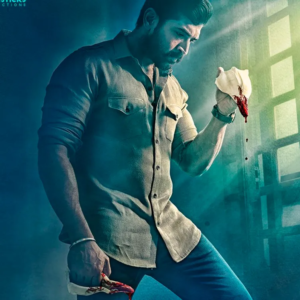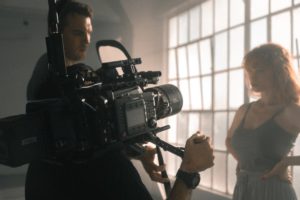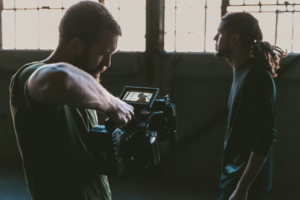A gaffer is head of the electrical department and the chief lighting technician on set. A gaffer runs a team of lighting technicians to execute a production’s lighting plan. The best boy electric helps a gaffer lead lightning technicians, acting as second-in-command to the gaffer. As head of a film or television set’s lighting and power department, the gaffer helps to achieve the cinematic image desired for the project through the use of lights and running cables. Fun fact: The name gaffer actually comes from a British slang term. A hooked metal pole used in theaters to adjust stage lights in the past was called a “gaff.”
What Does a Gaffer Do?
 A gaffer has a variety of responsibilities spanning the pre-production and production phases of a project, such as a TV show or a movie. Overall responsibilities include:
A gaffer has a variety of responsibilities spanning the pre-production and production phases of a project, such as a TV show or a movie. Overall responsibilities include:
- Reading the script for a project, noting any special lighting needs
- Meeting with producers, the director, and the director of photography to find out their vision for a project’s lighting
- Developing a plan to execute that vision with a project’s budget, including what lights and equipment are best for a job
- Assembling the lighting crew, which will include the best boy, lighting technicians, and lamp operators
- Sharing the lighting plan with the best boy, who will then lead lighting technicians to set up electrical equipment and lights
- Observing the lighting on set during filming, making adjustments as necessary to make sure the lighting is perfect
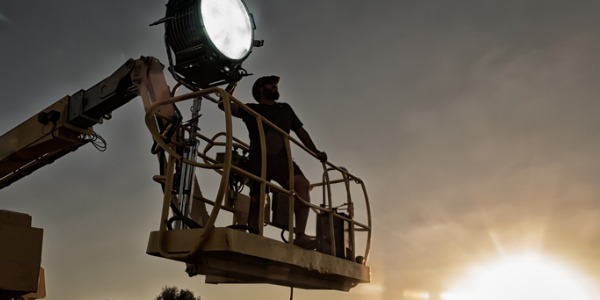
How Does a Gaffer Prep a Project?
A gaffer’s work begins before the shoot takes place. The gaffer must go on a tech scout to check out a planned location. Using the script and observations of the site (s) where a shoot will take place, the gaffer notes electrical sources and any potential difficulties that could occur at that spot during shooting. Once a gaffer makes these notes, they’ll meet to talk about logistics as well as work out a budget with the following people:
- Best boy(s)
- Director
- Director of Photography
- Key grip
- Producer(s)
Every location calls for a unique plan and budget. Gaffers must account for everything that could go wrong or right on a shooting day, from clouds, sun, and other weather to overloading outlets.
What Does a Gaffer Do on a Set?
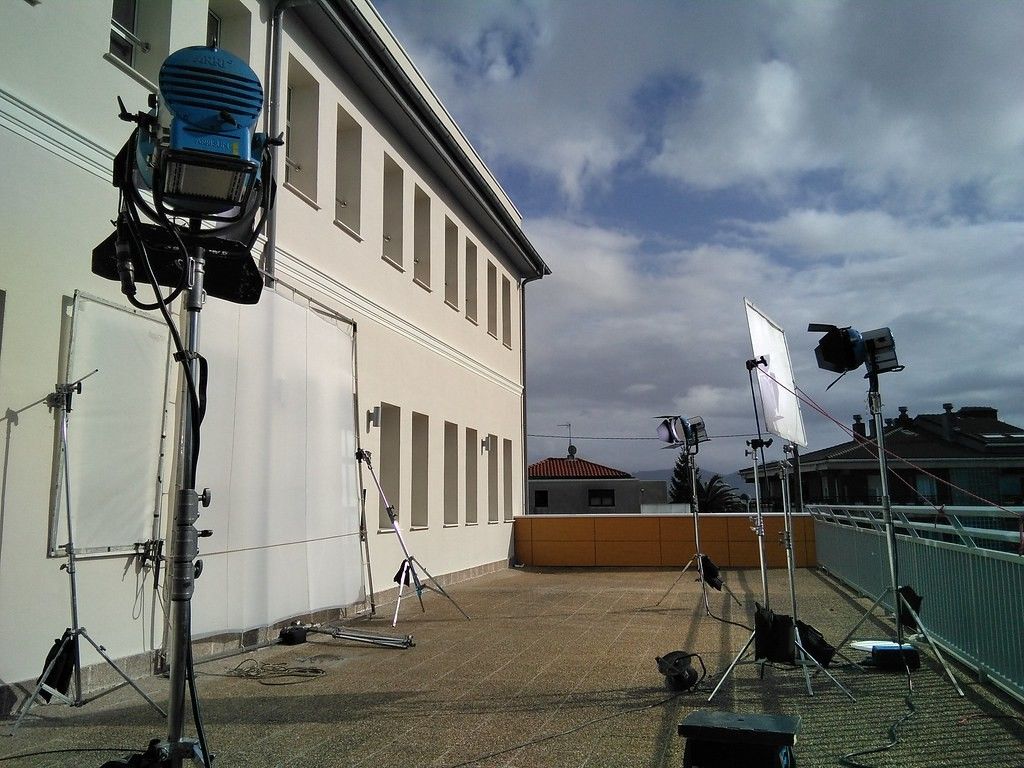 A gaffer has wide-ranging responsibility as the chief electrician on a set. A gaffer takes on the complex task of planning and executing a lighting scheme while simultaneously managing:
A gaffer has wide-ranging responsibility as the chief electrician on a set. A gaffer takes on the complex task of planning and executing a lighting scheme while simultaneously managing:
- Electrical equipment
- Instruments
- Light sources
Other members on a gaffer’s team include the electricians (also known as electrics). A gaffer also needs to manage these team members so that everyone is on the same page throughout the constant running between camera setups and takes.
Gaffers vs. Grips
A gaffer will work with an assortment of film crew and other personnel during production, including the grip crew. While the role of a gaffer and their team are closely linked to the role of the grip crew, the roles are not the same. The lighting technicians are responsible for setting up all electrical equipment. The grip crew, on the other hand, is responsible for all non-electrical equipment used by the gaffer and camera operators. Non-electrical equipment is known as rigging and includes any equipment used for hoisting or lifting other equipment. The grip department specializes in lighting rigs and camera rigs. Lighting rigs achieve lighting effects and techniques, while camera rigs stabilize a camera’s movement and achieve particular camera angles. The leader of a grip crew is known as a key grip, and that person coordinates rigging needs, much like the gaffer coordinates lighting requirements. A grip crew also has a best boy, though this one is called the best boy grip and shouldn’t be confused with the best boy electric.
How to Become a Gaffer
 Every gaffer takes a different path to a job in the industry. A combination of education and practical experience helps gaffers succeed in their roles.
Every gaffer takes a different path to a job in the industry. A combination of education and practical experience helps gaffers succeed in their roles.
Education
While some gaffers get started working on sets as production assistants, others attend film school. Going to film school allows future gaffers to work on multiple sets and gain experience from different jobs without the pressure of a professional environment. In addition to learning the ins and outs of filmmaking, an aspiring gaffer needs to be knowledgeable about other departments as well, such as grip and camera, as this will help with collaboration.
Training
Much of the training that aspiring gaffers receive is hands-on. Many gaffers start in an entry-level position on a lighting crew. Working with a lighting crew before moving into the gaffer role will provide aspiring gaffers with the practical experience required to create a specific look with lights effectively. Gaffers typically get started working on short films or student films, moving onto longer shoots and larger sets as their reputation grows.
Advancement
As gaffer is the top position in a lighting department, career advancement typically comes from working on bigger shoots. Networking, talent, and hard work will help any future gaffer progress in their career.
Essential Skills and Personality Traits
Certain abilities and personality traits are vital to succeeding as a gaffer. Key skills include:
- Adherence to safety precautions
- The ability to remain calm
- Excellent interpersonal skills
Working with lighting equipment comes with all sorts of risks (think: heavy equipment and the possibility of starting a fire), so safety is one of the most critical aspects of this profession. Gaffers need experience in safety practices, which they can learn from working in power distribution or as a set lighting technician. The ability to work with various other personalities and remain calm while doing so is also essential for a gaffer. A gaffer works in a high-stress environment and needs to be able to reduce and manage conflicts between others on a production team.
What to Expect When Working as a Gaffer
A gaffer’s salary and work environment may vary depending on a variety of factors, such as their level of experience and the size of the set.
Salary Expectations
The salary range for a gaffer stretches from $19,000 to $129,000, with the average salary coming in at approximately $54,700. Non-union gaffers have to set their own day rates, which are generally lower than day rates for union gaffers. This difference is because the union sets a pay scale for members, and productions must comply with this scale.
Lifestyle and Workplace Expectations
Working on sets typically comes with long, non-traditional hours. Crews need to be constantly available and often work 12-18 hours per day for periods of weeks or even months to complete a project. A gaffer must adhere to tight schedules and deadlines and must also be able to adjust their schedules to factors they can’t predict ahead of time (like weather). A gaffer may also be required to travel to work on location. Going to film school will give you the basis for becoming a successful gaffer. Get started by taking classes at NFI today.





